Intel Core Ultra 9 285K & Ultra 5 245K Desktop Processor Review

- iGPU performance improved considerably
- Good power efficiency
- Gaming performance lower than 14th Gen
- No AVX512 Support
Intel Arrow Lake processors mark a significant step forward for the major chip manufacturer which has been in the news quite often of late. The new Intel Core Ultra 200S series processors are the first to include silicon made from TSMC on the package, however, this is isn’t the first time that Intel is using TSMC made silicon. TSMC has been making chipsets for Intel motherboards for ages and with the Arrow Lake launch, that relationship has only gotten stronger. So what does that mean for the consumer? Better performance? More power-efficiency? Let’s find out in today’s review of the Intel Core Ultra 9 285K and Ultra 5 245K.
Intel Core Ultra 200S Processors a.k.a. Arrow Lake-S
Intel recently unveiled their latest mobile processors in the form of Core Ultra Series 2 a.k.a. Lunar Lake boasting of several new improvements especially on the AI acceleration front along with all new CPU cores and several efficiency gains with regards to power consumption and thermals. Arrow Lake borrows a lot of things from Lunar Lake including the two new core architectures – Lion Cove for the P-Core (Performance Cores) and Skymont for the E-Core (Efficiency Cores). The P-Cores also get a larger L2 Cache and the E-Cores get access to the L3 Cache. The NPU (Neural Processing Unit) isn’t as powerful as Lunar Lake with just 13 TOPS compared to the 48 TOPS that Lunar Lake’s NPU4 is capable of. This is the first ever NPU on an Intel Desktop processor and there are plenty of other avenues for AI acceleration on desktop systems so more of the real estate on the CPU package can be dedicated to CPU compute rather than AI acceleration. In Intel’s terms, this would be 2x Gen3 NPU cores. The mobile chips get the newer Gen4 NPU Cores. The iGPU (Integrated Graphics Processing Unit) is also new with about 320 Execution Units. Aside from these improvements, there’s integrated Thunderbolt 4 and Wi-Fi 6E support. Though it must be pointed out that most top-tier motherboards have already integrated the newer Wi-Fi 7 standard onto their motherboards.
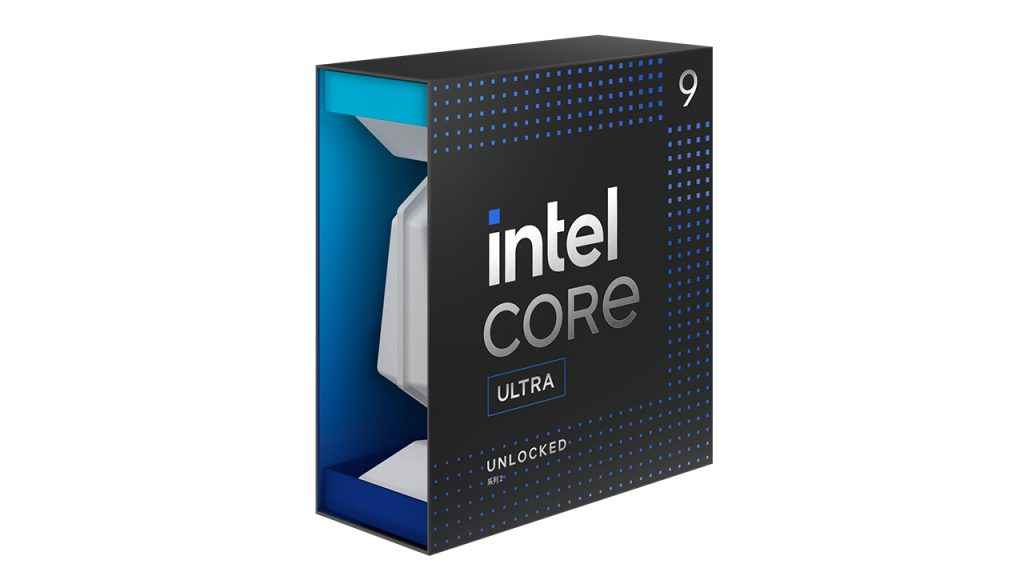
The new Intel Core Ultra 200S processors are expected to reduce power consumption across a wide assortment of workloads and even provide higher multi-threaded performance over Raptor Lake-R processors in some workloads. One of the major changes to the physical design is that the Arrow Lake processors are the first to have a disaggregated design which is a different way of saying that they use a chiplet design much like what AMD does with their Ryzen processors. However, the interconnect technologies that AMD and Intel use are quite different so it’s not exactly the same. That being said, a disaggregated structure allows Intel to pick tiles with different performance metrics across different SKUs. There’s a lot more to dig through on the architecture front but we’ll stick to the review for the Core Ultra 9 285K for today.
Intel Core Ultra 9 285K and Ultra 5 245K Specifications
We’ve already reported on the launch of the Intel Core Ultra 200S series with this first wave of processors having just five SKUs but they’re all heavy hitters. At the top of the stack is the Intel Core Ultra 9 285K which has 8 P-Cores and 16 E-Cores for a total of 24 Threads. Notice something? There’s no multi-threading! Intel has done away with HyperThreading and has introduced cores that just do one thread each. What this entails for heavily-threaded applications will be seen shortly. The flagship 285K is followed by the Ultra 7 265K and 265KF and then we have the Ultra 5 245K and 245KF. The Ultra 5 245K comes with 6 P-Cores and 8 E-Cores.
| SKU | P-Cores | E-Cores | Threads | GPU Cores | NPU TOPS | Price (USD) |
| Intel Core Ultra 9 285K | 8 | 16 | 24 | 4 | 13 | 589 |
| Intel Core Ultra 7 265K | 8 | 12 | 20 | 4 | 13 | 394 |
| Intel Core Ultra 7 265KF | 8 | 12 | 20 | NA | 13 | 379 |
| Intel Core Ultra 5 245K | 6 | 8 | 14 | 4 | 13 | 309 |
| Intel Core Ultra 7 245KF | 6 | 8 | 14 | NA | 13 | 294 |
The Intel Xe-LPG iGPU on these processors sport 4 GPU Cores and the NPU can do 13 TOPS as we’d mentioned previously. The Intel Core Ultra 9 285K has 36 MB of L3 Cache on the compute tile which can be accessed by all the cores. Moreover, unlike previous designs where the E-Cores would be on one side of the silicon and P-Cores would be on the other, the Arrow Lake-S processors now have them placed in a sandwiched manner. So the P-Cores and E-Core clusters are interleaved.
The E-Cores come with a base clock of 3.2 GHz and go up to 4.6 GHz whereas the P-Cores start off at 3.7 GHz and have a Turbo boost of 5.5 GHz, a Turbo Boost Max of 5.6 GHz and a Thermal Velocity Boost going up to 5.7 GHz. If you’ve gone through the 14900K marketing then you’d have the 6 GHz number mentioned several times across their literature. That has now dropped with this new generation of processors. The iGPU with its 4 Xe Cores totals up to 64 Execution Units and they start off at 300 MHz and go all the way to 2 GHz on the 285K and 265K while the 245K gets about 1.9 GHz of boost.

As for memory support, the Arrow Lake processors can handle CUDIMM (Clocked Unbuffered DIMM) as well as CSODIMM (Clocked SODIMM). These are the new memory technologies that have a clock signal source on the memory sticks themselves compared to previous memory technology which relied on the CPU for the clock signal. Officially, the Intel Core Ultra 200S processors can handle up to DDR5-6400 CUDIMM and up to DDR5-5600 UDIMM.
As for the platform, we get a new 800 series chipset based motherboard with the first wave only featuring the Z890 chipset with other variants coming later in the launch cycle.
Intel Core Ultra 200S Test Rig
We received a fully decked out kit with the new CUDIMMs in the form of Kingston Renegade DDR5 memory modules that can go up to 8400 MT/s, an ASUS ROG MAXIMUS Z890 HERO motherboard and the new ASUS ROG RYUJIN III 360 ARGB all-in-one liquid coolers. Here’s the full specs:
- CPU: Intel Core Ultra 9 285K and Ultra 5 245K
- Motherboard: ASUS ROG MAXIMUS Z890 HERO
- RAM: 2x Kingston Renegade KF582C40 24 GB
- SSD: Kingston Renegade PCIe Gen 4.0 SSD
- Cooler: ASUS ROG RYUJIN III 360 ARGB
- PSU: Cooler Master MWE Gold 850 V2
ASUS ROG MAXIMUS Z890 HERO
The ASUS ROG MAXIMUS Z890 HERO motherboard offers a comprehensive feature set designed for high-performance computing and gaming. At its core, this motherboard combines extensive connectivity, advanced cooling options, and robust power management, making it ideal for enthusiasts seeking a versatile, reliable platform. Equipped with six M.2 slots, four of which feature thermal pads for improved cooling, the primary slot includes an adjustable bracket called the ROG Variable NVMe Turbo Bracing Device.
Connectivity is another strong point of the ROG MAXIMUS Z890 HERO. The rear I/O panel features dual LAN ports (2.5 and 5 Gbps), Wi-Fi 7 support, two Thunderbolt 4 ports, and four 10G USB ports, ensuring ample options for high-speed connections. While it doesn’t hold the highest count of USB ports among Z890 motherboards, it offers sufficient connectivity for most users’ needs. Additionally, the motherboard aligns with modern case designs, featuring dual front-panel USB Type-C ports and multiple front-panel I/O options, including two USB 2.0 connectors and a USB 3 Type-A port.
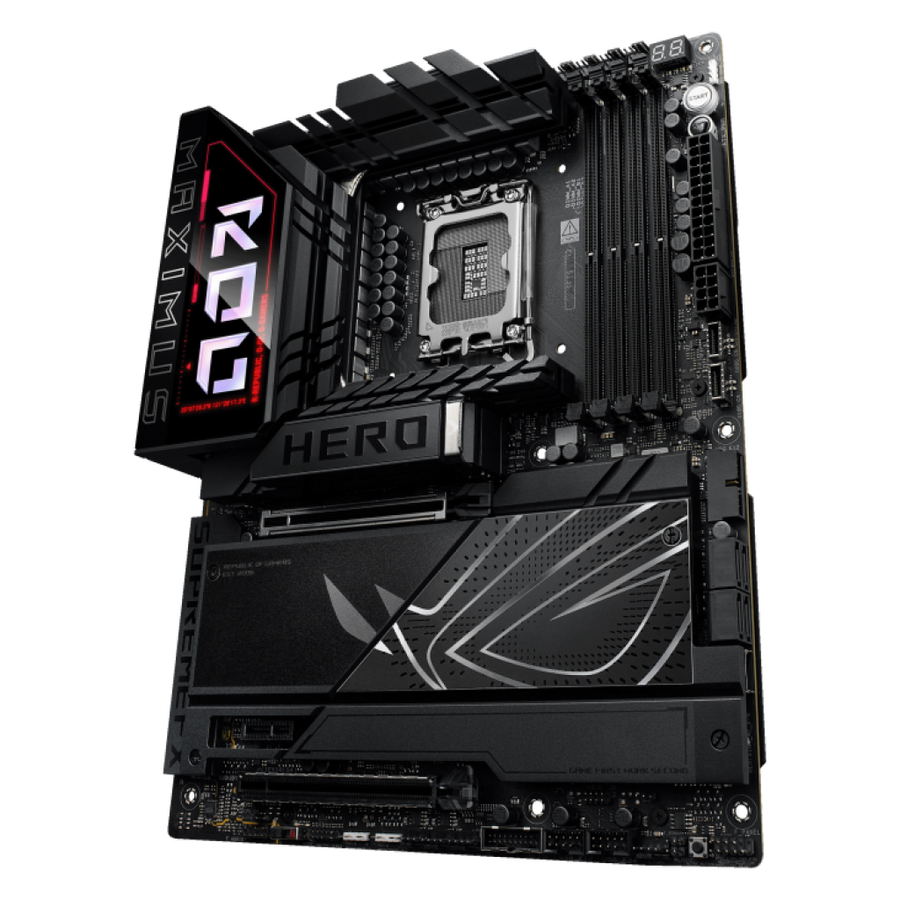
Storage-wise, it supports four SATA ports, preserving traditional storage connectivity options. Uniquely, it also includes a SlimSAS connector, similar to those in ASUS X870E chipset models, without reducing available M.2 or SATA slots.
The VRM section is designed to handle demanding applications, featuring large heatsinks connected by a heat pipe, with an estimated capacity of at least 110A, providing strong power delivery and stability. Although specific VRM details aren’t available, the thermal design points to a robust setup.
Priced at around $700–800 or INR 70,000 to 80,000, the ASUS ROG MAXIMUS Z890 HERO is well-suited for enthusiasts who prioritise quality and feature depth, and it remains a compelling choice if planning an Arrow-Lake Core Ultra 200S update.
Intel Core Ultra 9 285K and Ultra 5 245K Performance
Cinebench 2024
Cinebench 2024 is based on Maxon’s Cinema 4D software, designed to evaluate a processor’s performance in rendering complex 3D scenes. It tests both single-core and multi-core capabilities, highlighting how efficiently a CPU handles multi-threaded tasks common in professional rendering workflows. The benchmark utilizes modern instruction sets and large datasets, providing an up-to-date assessment of CPU performance in contemporary applications.
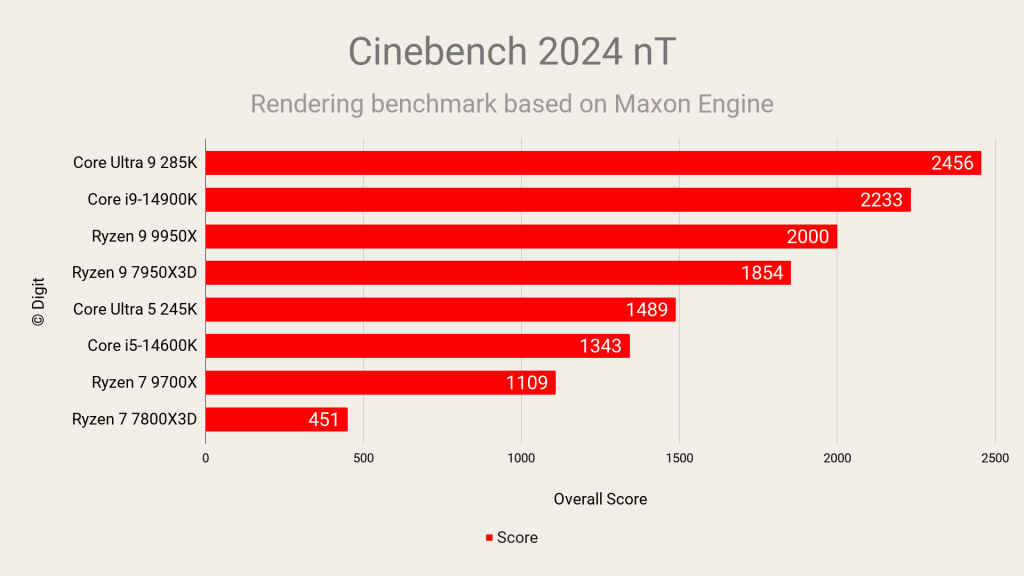
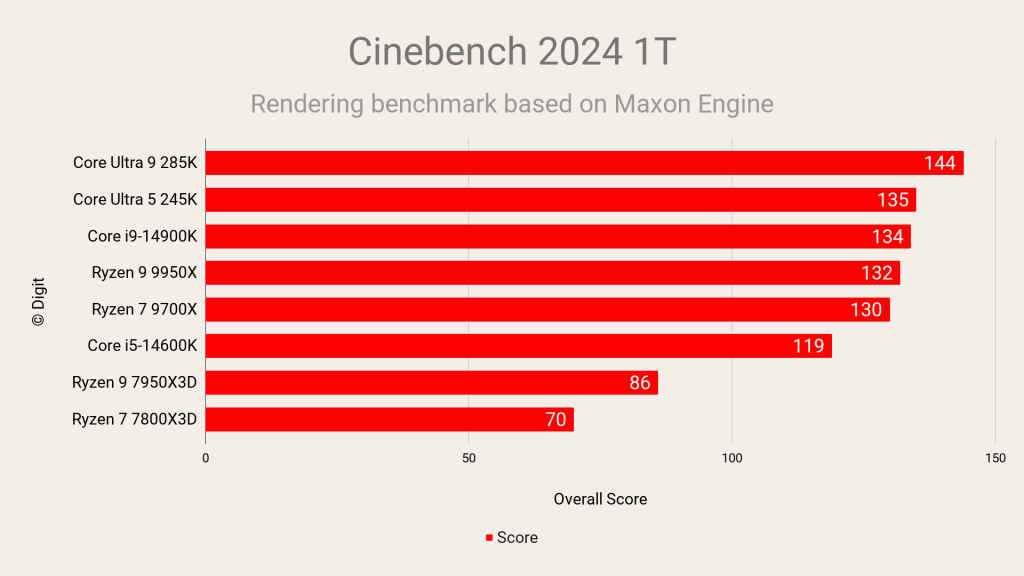
Cinebench R23
Cinebench R23 is the older version based on the same Cinema 4D engine and it too measures a processor’s ability to render photorealistic 3D scenes. Though replaced by Cinebench 2024, we retain it to compare against processors launched a few years prior. It also focuses on both single-threaded and multi-threaded performance, simulating real-world tasks relevant to content creators and professionals in 3D rendering.
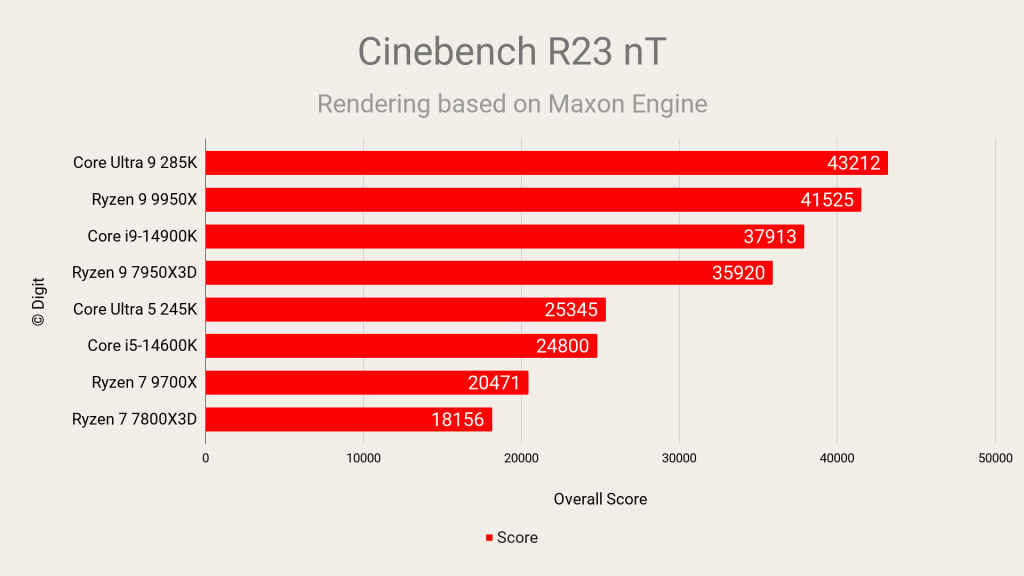
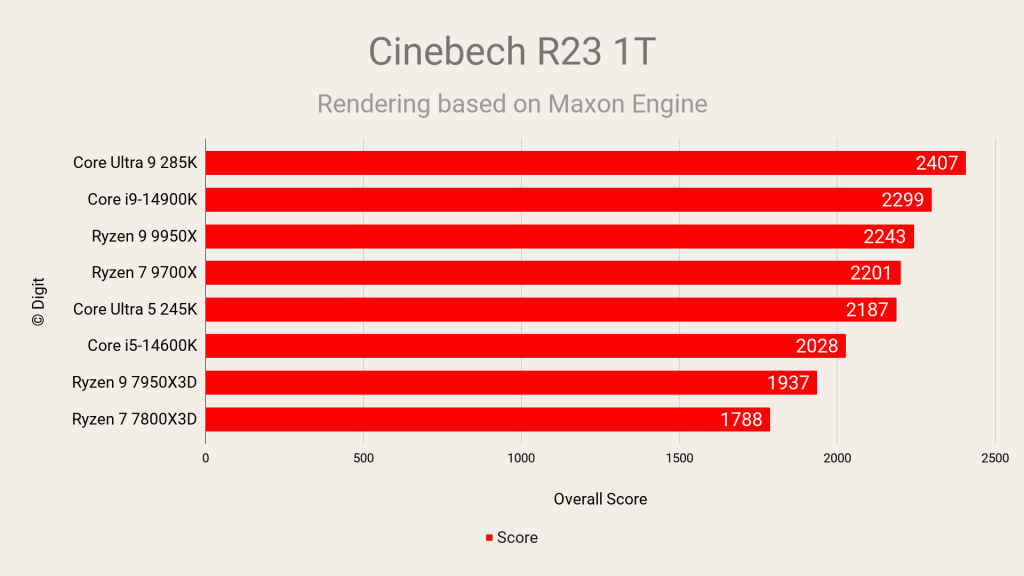
Blender
The Blender Benchmark assesses a processor’s performance by rendering scenes using Blender, a popular open-source 3D creation suite. It evaluates both CPU and GPU capabilities in handling complex rendering tasks. This benchmark provides insights into how well a processor performs in real-world 3D modeling, animation, and rendering scenarios. An interesting aspect is that it highlights the efficiency of different CPU architectures in multi-threaded workloads, as Blender can effectively utilize multiple cores. It’s particularly useful for professionals and enthusiasts relying on Blender, indicating how hardware upgrades might impact workflow efficiency and rendering times.
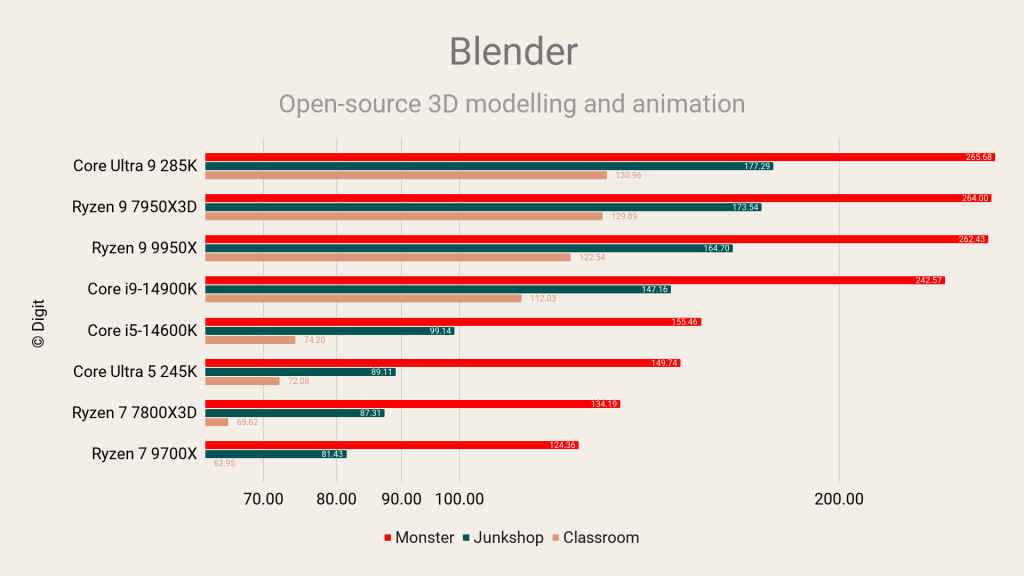
V-Ray
V-Ray is another benchmark that measures a processor’s performance in rendering but it uses the V-Ray engine, widely used in visual effects, architecture, and design industries. It tests both CPU and GPU rendering capabilities, focusing on multi-threaded performance and handling complex calculations involved in ray tracing. CPUs with higher core counts and multi-threading technology tend to excel here as V-Ray efficiently utilises available threads.
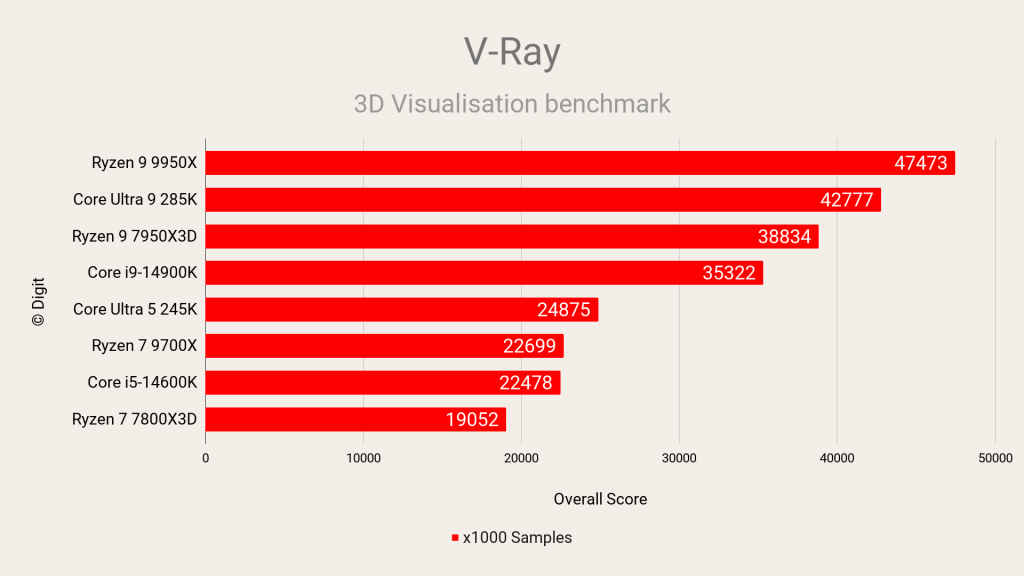
WinRAR
WinRAR Benchmark evaluates a processor’s performance in data compression and decompression tasks, common in file archiving and management. It tests single-threaded performance, memory bandwidth, and latency, as these factors influence compression speed. While WinRAR isn’t fully optimized for multi-core CPUs, processors with higher Instructions Per Cycle (IPC) and clock speeds perform better. For more modern algorithms, we use 7-Zip.
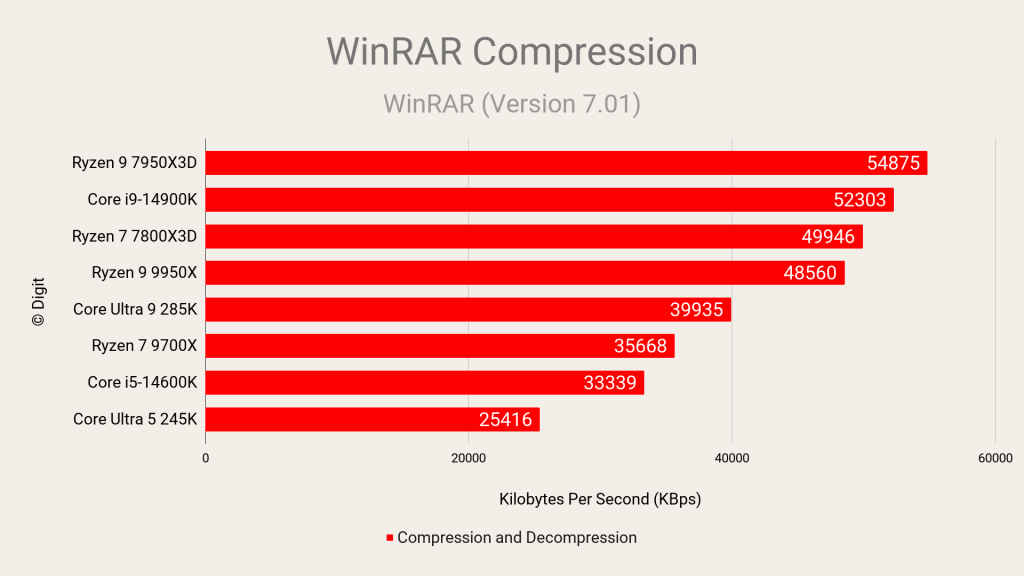
AIDA64
AIDA64 Memory Benchmark measures the memory bandwidth and latency of a system, highlighting how quickly data transfers between the CPU and RAM. It tests read, write, and copy speeds, providing insights into the efficiency of the memory subsystem, including RAM speed, timings, and memory controller performance. AIDA64 also has benchmarks to evaluate how well a processor can handle AES, ZLib and SHA3 encryption and decryption tasks.
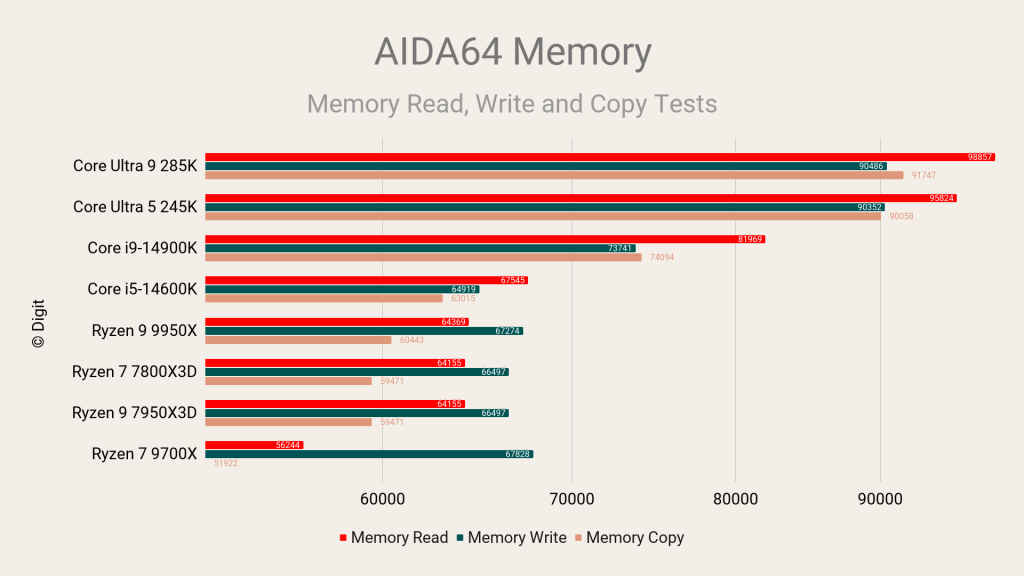
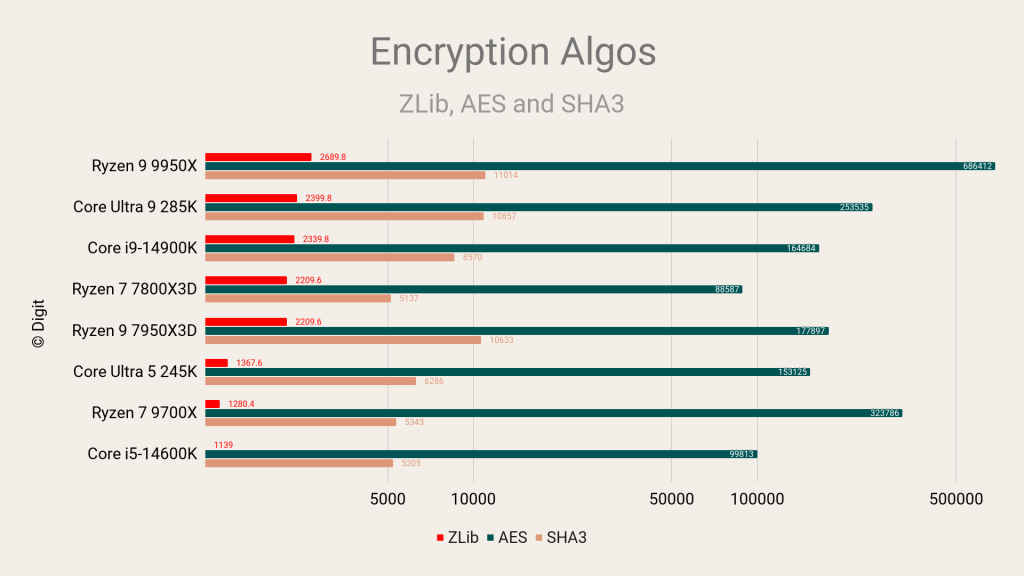
y-cruncher
The y-cruncher benchmark computes mathematical constants like Pi to a high number of digits—in this case, 2.5 billion—testing a processor’s multi-threaded performance and memory subsystem under heavy computational load. It stresses the CPU’s integer and floating-point units, cache hierarchy, and memory bandwidth. It’s particularly useful for evaluating system stability under sustained heavy workloads, making it valuable for users who are overclocking their systems.
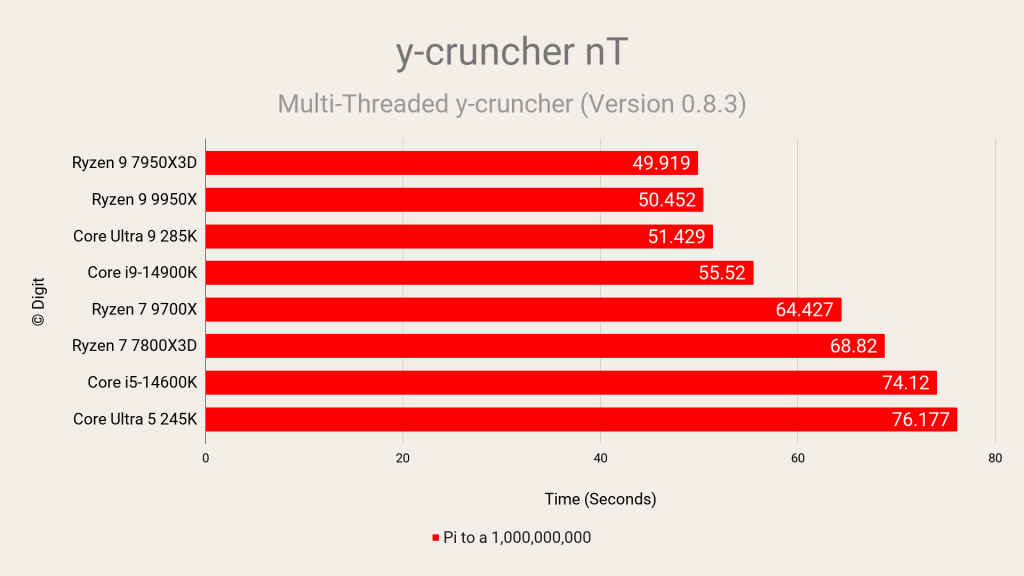
Procyon Office
The Procyon Office Benchmark measures a processor’s performance in real-world office applications like the Microsoft Office suite, testing tasks such as document editing, spreadsheet calculations, and presentation creation. It focuses on both single-threaded and multi-threaded performance, providing insights into how a CPU handles everyday productivity tasks.
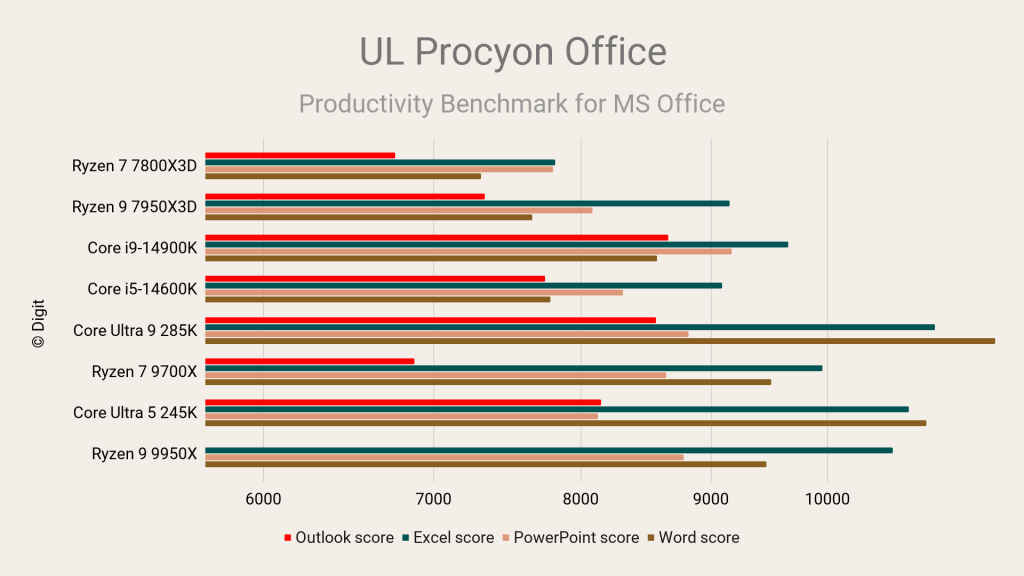
Mozilla Kraken & Google Octane
Mozilla Kraken and Google Octane are JavaScript benchmarks evaluating a processor’s performance in executing complex web-based scripts, reflecting real-world web application usage. It tests single-threaded performance and the efficiency of a CPU’s instruction pipelines in handling dynamic scripting languages.
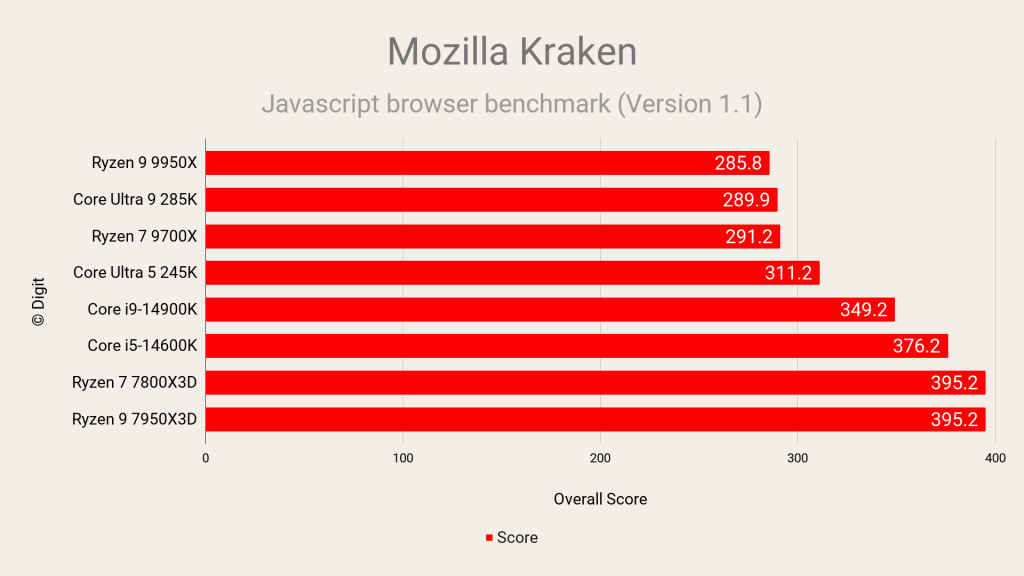
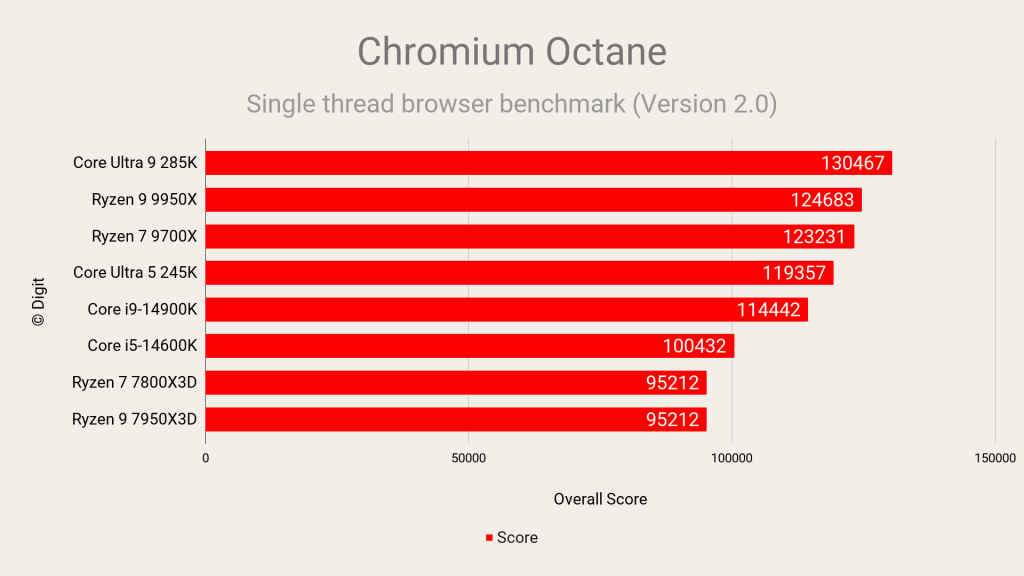
Procyon AI Computer Vision
The UL Procyon AI Computer Vision benchmark measures the performance of AI inference engines to understand how well processors can handle machine-vision tasks using popular neural networks.
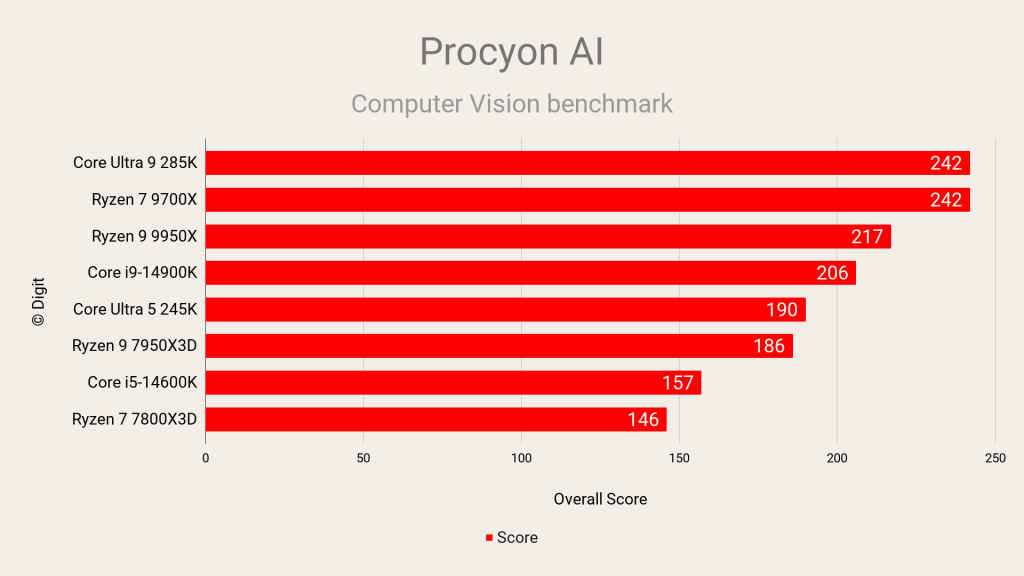
3DMark Time Spy (iGPU)
3DMark Time Spy is a DirectX 12 benchmark evaluating graphics performance. We use it primarily to test the relative performance of the iGPU to discrete GPUs and where iGPUs stand amongst their peers. With both companies improving their integrated graphics stack, it allows us to measure how well the iGPU performs and if it can handle popular eSports titles.
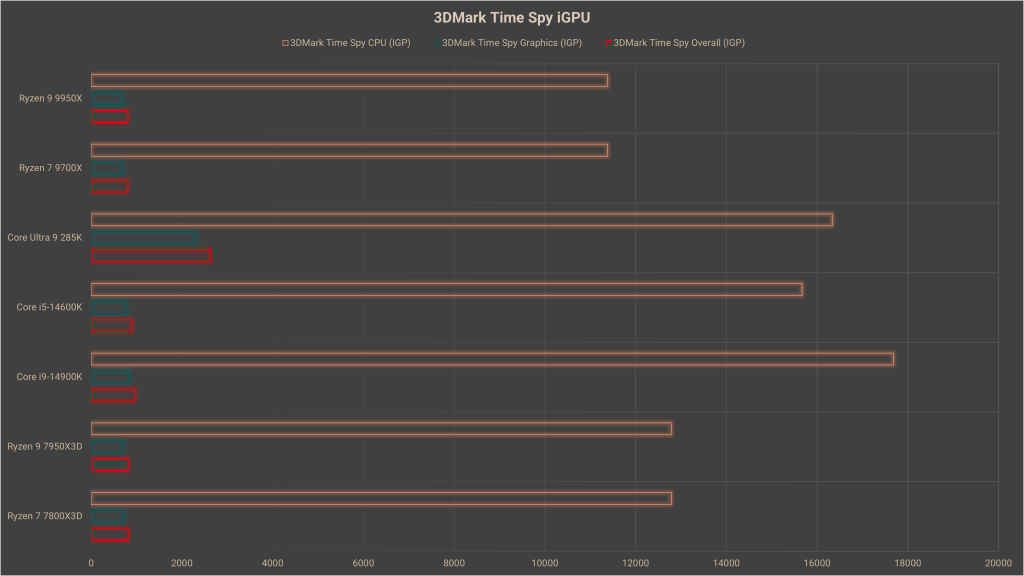
3DMark Time Spy Using Discrete GPU
We also run 3DMark Time Spy using the same discrete GPU to see how well the CPU interacts with discrete graphics cards. It can highlight potential bottlenecks where the CPU limits the GPU’s performance.
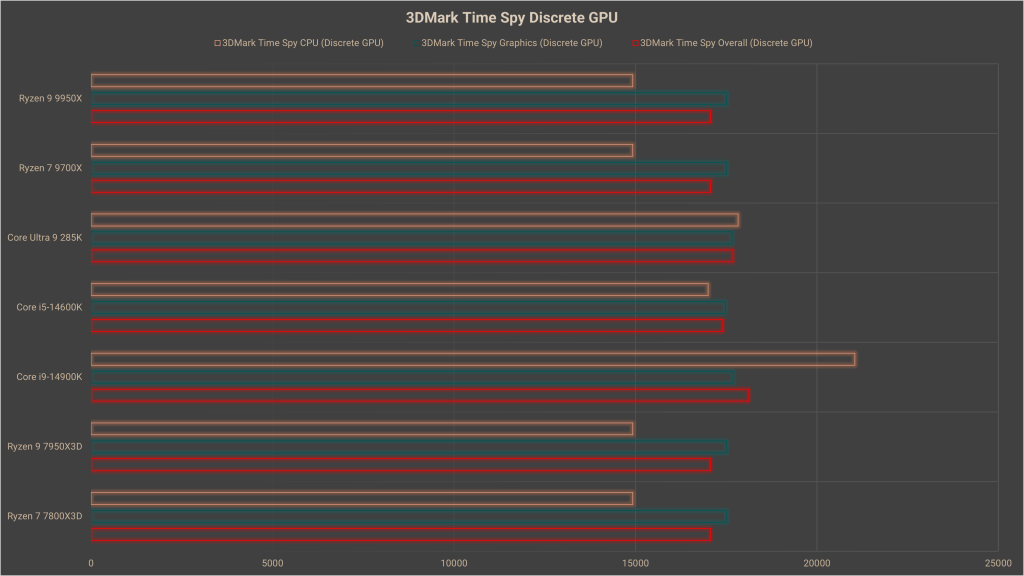
7 Game Average
While 3DMark is an excellent synthetic benchmark, it’s not really indicative of real-world gaming performance and that’s why we have to rely on popular AAA video games to assess how well the processor deals with contemporary video game engines. We revise the video games once every two years based on what’s most popular as per Steam and we also maintain a mix between different game engines.
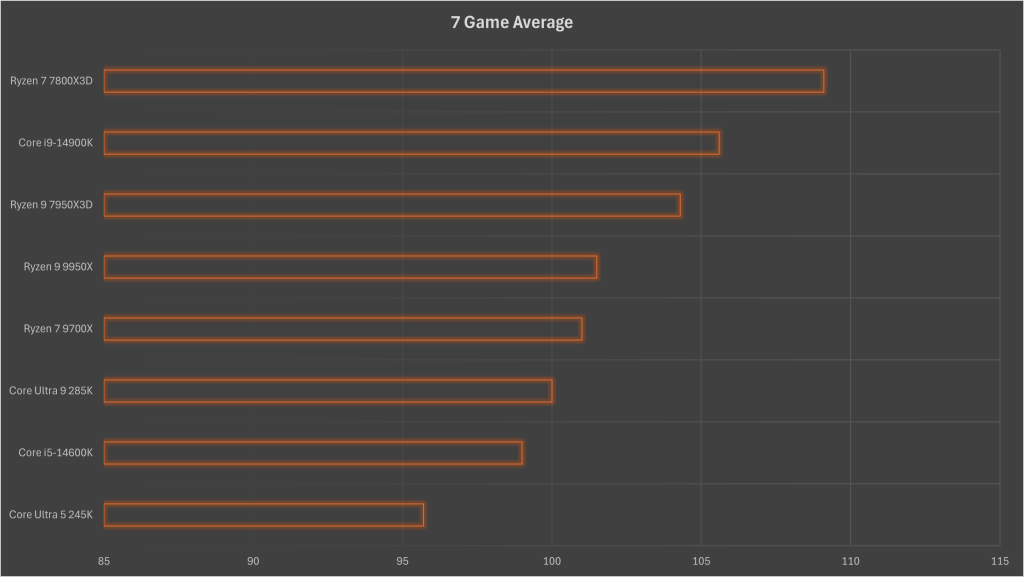
Core to Core Latency – Ultra 9 285K and Ultra 5 245K
Core-to-Core Latency measures the time it takes for data to transfer between different cores within a CPU. It highlights the efficiency of the processor’s inter-core communication pathways and cache coherency mechanisms. An interesting insight is that lower core-to-core latency can improve performance in multi-threaded applications where threads need to synchronize or share data frequently. It can reveal architectural differences between CPUs, such as the impact of chiplet designs versus monolithic die layouts, affecting inter-core communication efficiency.

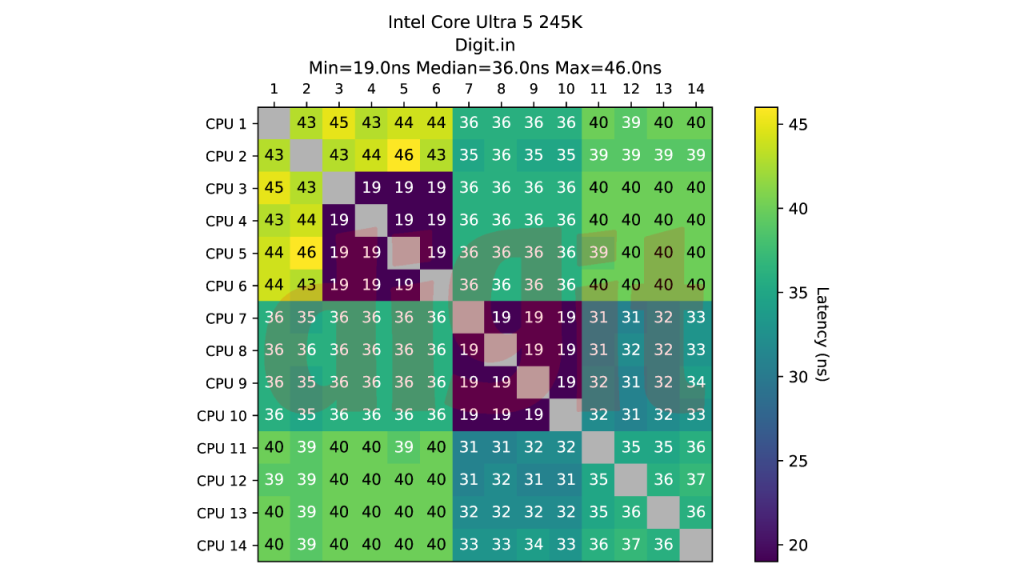
The Intel Core Ultra 200S processor with their new interleaved CPU cores aren’t getting a significant latency penalty. For P-Cores to talk to each other or with the E-Cores looks fairly consistent. And the E-Core clusters enjoy low intra-core latency as we can see from the little purple blocks in the sea of green.
Power and Thermals
The Intel Core Ultra 9 285K averaged at about 206 Watts during a 10 minute throttling run. This is indicative of a sustained load and is a little lesser than what we had seen on the Intel Core i9-14900K. However, the peak power consumption has dropped by a huge amount from 317 watts to about 222 watts. Temperatures were also very consistent at about 65 degrees Celsius throughout the run, very few spikes were seen and the maximum we’d recorded was 68 degrees. That’s quite a massive improvement over the 14900K.
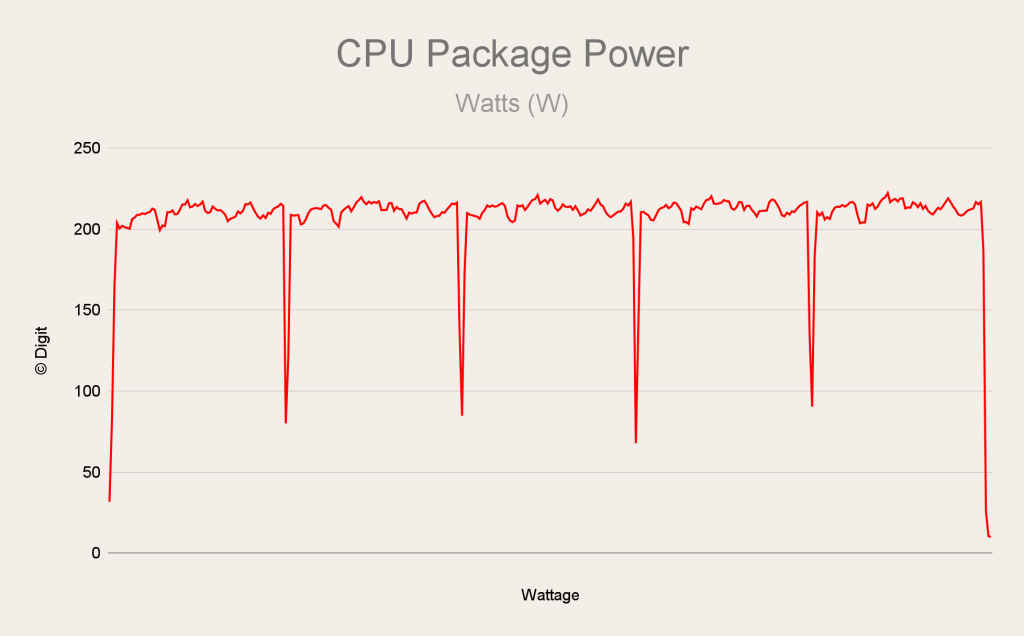
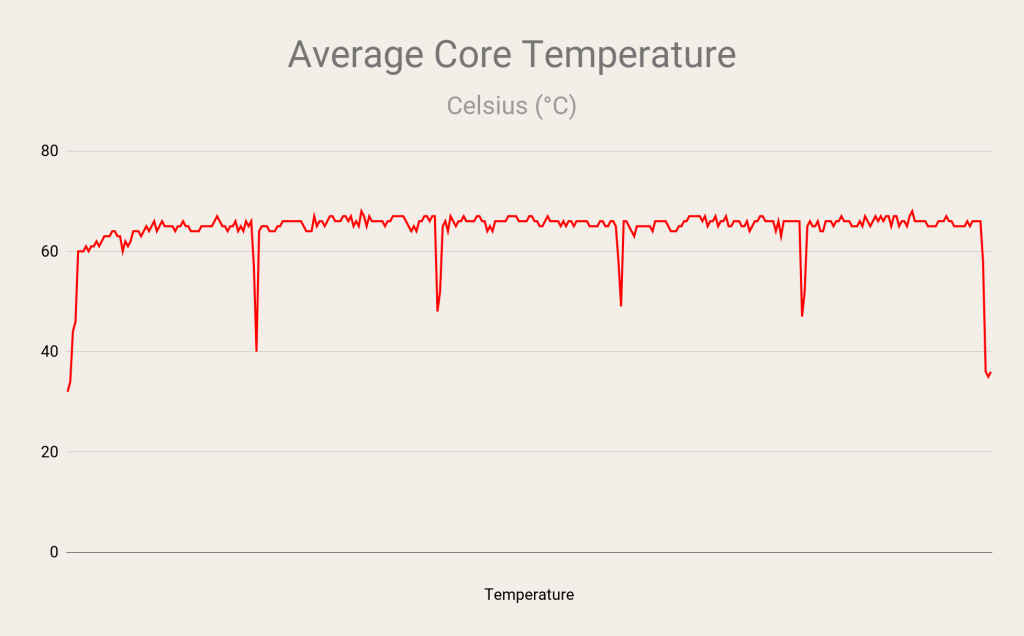
Verdict
With the Intel Core Ultra 200S series, Intel has managed to bag a few wins over its predecessor, the Intel Core 14th Gen Processors. However, there are a few losses as well. With productivity tasks, Intel has managed to retain its crown and we even saw some anomalous spikes in some benchmarks putting the Intel Core Ultra 9 285K and the Ultra 5 245K way ahead of everyone else. The support for much faster memory has certainly helped the performance especially considering that the power consumption isn’t as high as the 14th Gen processors. In Blender, Adobe Photoshop and V-Ray, we saw the 285K going toe-to-toe with the 9950X from the competition and it even beat the 9950X in video editing workloads. However, when it comes to gaming, the Ultra 9 285K did end up taking a few hits. This is the first generation of processors from Intel with quite a few new technologies and as a result there will always be some teething issues that we might, hopefully, see resolved in the coming months. Overall, the new Intel Core Ultra 200S processors look like they’re here to stay and we’re certainly excited to see what Intel follows this up with.
Intel Core Ultra 9 285K Desktop Processor Key Specs, Price and Launch Date
| Release Date: | |
| Market Status: | Launched |
Key Specifications
Mithun Mohandas
Mithun Mohandas is an Indian technology journalist with 14 years of experience covering consumer technology. He is currently employed at Digit in the capacity of a Managing Editor. Mithun has a background in Computer Engineering and was an active member of the IEEE during his college days. He has a penchant for digging deep into unravelling what makes a device tick. If there's a transistor in it, Mithun's probably going to rip it apart till he finds it. At Digit, he covers processors, graphics cards, storage media, displays and networking devices aside from anything developer related. As an avid PC gamer, he prefers RTS and FPS titles, and can be quite competitive in a race to the finish line. He only gets consoles for the exclusives. He can be seen playing Valorant, World of Tanks, HITMAN and the occasional Age of Empires or being the voice behind hundreds of Digit videos. View Full Profile
